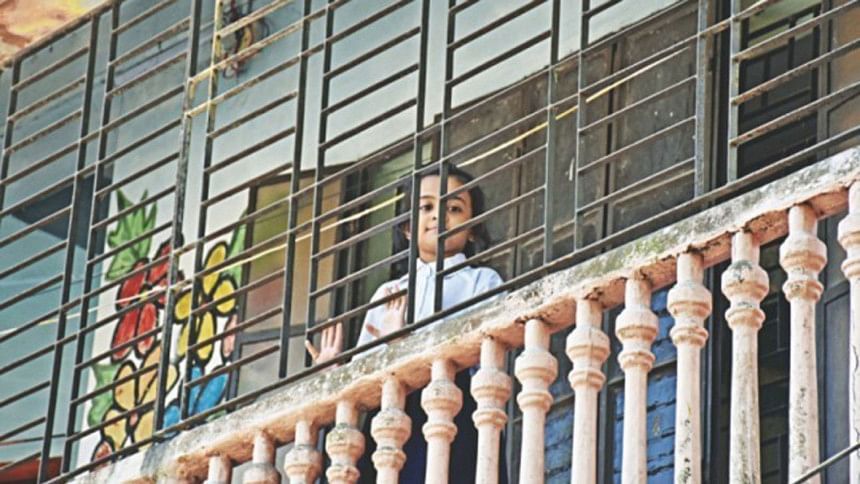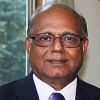A blueprint for school reopening and learning recovery

In 2018, the UN General Assembly proclaimed January 24 as International Day of Education to celebrate the role of education for peace and development. The pandemic that originated in Wuhan, China in December 2019 kept schools shut throughout the world for most of 2020, and its end is not in sight, forcing us to reflect on the day of education in a different light.
The pandemic has magnified the inequality, exclusion and poor quality of instruction that already existed in the education systems of the low-income countries.
Educationists agree that all children should be able to read by age 10. When children don't read by age 10, or at least by the end of primary school, they face almost an insurmountable handicap. They fail to master the basic tools of learning and keep falling farther behind in their school life, and eventually in life in general.
This phenomenon of cumulative learning deficit arising from the inability to read and understand a simple text by age 10 is described by the World Bank as "learning poverty". It estimates that 53 percent of children in low- and middle-income countries currently suffer from learning poverty, and the level is up to 80 percent in poor countries.
Bangladesh falls squarely in the learning poverty zone. The World Bank, based on national data, estimated that 56 percent of the children in the later stage of primary education in Bangladesh are not proficient in reading at the expected level. The pandemic has added a new twist to the challenge that already existed.
What should be the plan to restart and begin recovery of education? As we already know, school closure has been extended to end of January. Looking ahead, given the uncertainty of the course of the pandemic, there has to be contingency planning, keeping in view different options and fulfilling some essential conditions.
Education Watch, an independent monitoring body, makes recommendations on critical education issues based on evidence from the field. Recently, it examined the question of when and how schools should reopen. A survey was undertaken in mid-December among about 3,000 students, teachers, parents, school officials and NGO personnel from 72 clusters in 24 upazilas under 8 divisions. In a virtual meeting on January 17, Education Watch presented a six-point action plan to the state minister for primary and mass education, Md Zakir Hussain, and senior officials of his ministry as well as the ministry of education. A summary of the action plan is given below.
Reopening schools
Schools should be reopened in February in non-metropolitan areas and in March in metropolitan areas; reopening in phases, with higher classes (10 and 12) in secondary and (classes 4 and 5) in primary first.
Ensuring safety and health of students and teachers
Wearing masks by students and teachers, handwashing with soap and water, clean toilets and classroom benches and desks sanitised daily; social distance in classroom with attendance in shifts and/or alternate days' classes.
Preparing a two-year recovery plan for learning loss
Abridged syllabus for the next two years focusing on key competencies in Bangla and math at primary; Bangla, English, math and science at secondary; reduced time on exams and more time on teaching (no PSC and JSC/JDC; shorter SSC and HSC with fewer subjects; less frequent and shorter in-school exams); reduced vacation time and remedial classes on Saturdays; digital/distance lessons blended with classroom instruction guided by teachers; and teachers' aides recruited through NGOs with government funding.
Supporting teachers
Subject-wise and class-wise guidelines for teachers on the recovery strategy; workshops and online instructions for teachers for this purpose; incentives for teachers for extra work and effort; vaccination priority for teachers.
Managing implementation of reopening and recovery
Central guidelines allowing flexibility and local adaptation; upazila taskforces involving education and local government personnel and NGOs for planning and monitoring; fund channelled (10 percent of education budgets for FY20 and FY21) to upazilas proportionate to student numbers; and fast-track planning and implementation.
Involving community/civil society
Networks such as CAMPE, Bangladesh Health Watch, and Bangladesh ECD Network, which are the nation's social capital, should be used for local adaptation of plans, mobilising public support, and monitoring implementation.
Clearly, "business as usual," going back to the pre-pandemic normal school day and classroom practices, will not do. An essential step is to put more effort and energy into actual teaching and learning, rather than spending students' and teachers' time on many examinations, either public or in-school. Students need to be assessed if they are learning as part of teaching rather than through separate formal examinations.
Reopening the schools safely and implementing a recovery plan in each school will require extra resources. Some Tk 66,000 crore are in the current year's education budget, a part of which will not be used for regular activities due to the pandemic. Ten percent of this amount—at least Tk 10 crore for each of 500 upazilas and thanas—can be distributed proportionately by student number to support primary and secondary schools to carry out their recovery plan. Schools not covered by MPO support also should be assisted, since at least a third of the school-going students are in private schools not currently supported by the government.
Completing the lessons for the year and promoting students to the next grade are practical concerns of a school system. In this regard, optimal use of the time of students and teachers is critical. Can the school calendar be made more children and learning friendly?
Two suggestions have been made by education experts: reducing the time lost on various public examinations and school-based examinations, and changing the school calendar from mid-September to mid-June with a long summer break. Such a school year will allow uninterrupted instruction time for students during the best part of the year, climate-wise.
Making the best of the Covid-19 disruption, the next school year may be a short one (February/March to August with minimal holidays), and a new 2021-2022 school year may begin in mid-September.
Awareness campaigns and communication with teachers and parents are critical for successful reopening. The NGOs and community organisations should be part of the upazila working group in providing overall guidance, assistance to schools and monitoring. The goal is not just to reopen, but also to keep the schools operating safely and help children recover their learning loss. We need to succeed in 2021, the golden jubilee year of Bangladesh's independence.
Manzoor Ahmed is professor emeritus at BRAC University.

 For all latest news, follow The Daily Star's Google News channel.
For all latest news, follow The Daily Star's Google News channel. 



Comments